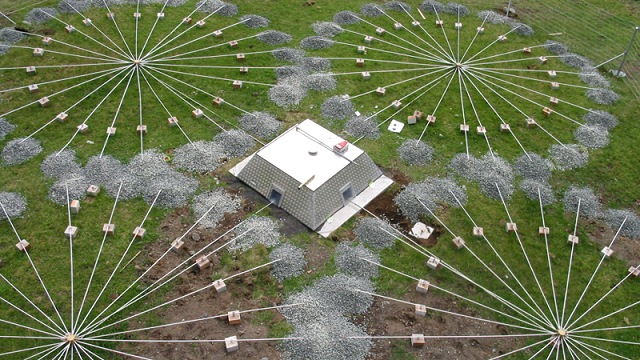
When North Korea conducted its third nuclear explosion on February 12, the global nuclear police, the Comprehensive Test Ban Treaty Organization, detected it immediately and soon afterward released its evidence. Most people probably know that the CTBTO uses seismometers to detect these forbidden explosions, but it also relies on instruments that monitor infrasound: sound that is too low in frequency for us to hear. Stations in Japan and China Russia recorded the superdeep bass roar of the bomb as it arrived from North Korea through the air, not the ground.
Three days later came the big meteor explosion in Russia. That was high in the atmosphere, not underground, and it gave infrasound its chance to shine. The tremendous shock wave that shattered the windows of Chelyabinsk spread over the world and was recorded by 17 of the CTBTO's 45 infrasound stations, even one in Antarctica. (The CTBTO has issued the record from the Antarctic station, sped up 135 times to make it audible.)
Atom bombs and meteors are just part of the subject, though—all sorts of things create infrasound, both natural and human. Natural sources include volcanoes, wind tumbling over mountain ranges, heavy surf, auroras, tornadoes, landslides, earthquakes and of course meteors. Human sources include vehicle traffic of all kinds, rocket launches, sonic booms, quarry blasts, military bombardments and of course nuclear explosions.
The lower limit of human hearing—the deepest bass notes of thunder or big church organ pipes—is a frequency of about 20 hertz, and infrasound goes from about 20 Hz down to perhaps 0.001 Hz, or one cycle in a thousand seconds. Anything slower than that is more meteorology than acoustics! Infrasound includes ordinary sound-type pressure waves as well as gravity waves, which are like ripples in a pond only in the atmosphere.
Infrasound waves are called microbaroms in the literature. It takes special large instruments to detect them, like the one shown in the photo. The flowerlike apparatus is a set of thin pipes that minimizes the noise of wind, arranged around a pressure sensor. The best instruments are networked arrays of these, scattered over an area measured in acres. Even so, infrasound arrays are put in remote places to avoid the noises of civilization. In California, UC San Diego has a strong infrasound program that includes research arrays near Temecula, Santa Margarita and Chico. It also runs one of the official CTBTO infrasound sites, near Palm Springs.